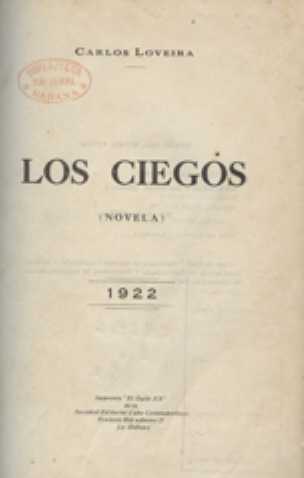4.2.5.1 The novelistic work of Carlos Loveira (1881 – 1928)

Carlos Loveira’s literary work in the form of novels includes the titles “Los Inmorales” (The Inmorals), 1919; “Generales y Doctores” (Generals and Doctors), 1920—a piece that will be addressed in a separate section given its importance for understanding the colonial and republican past; “Los Ciegos” (The Blind), 1922; and Juan Criollo (Juan Criollo), 1927. These novels are defined by similar thematic purposes and an identifiable style, although not one of great aesthetic scope.
“The Immoral” questions morality, especially that associated with the institution of marriage—whose legal dissolution had finally been accepted with the enactment of the Divorce Law in 1919—but also with regard to the requirements that holding public office or occupying a position of relative importance in society entailed, ranging from the falsification of moral precepts not professed at a private level.
In “The Blind,” the intricacies of an aristocratic marriage united not by genuine feelings but by economic reasons are addressed from an archetypal perspective in which the characters are made transparent, revealing through their behavior the material and ideological sphere of the bourgeoisie, and in contrast to the dispossessed.
In almost all of his works, the author defends the thesis of free love, threatened by prevailing morality and by circumstances arising from social gaps associated with economic status. Regarding women, he sided with “fallen women,” victims in most cases of their circumstances and poverty; but not only from this perspective, but also from the right to love and others that were denied to them in practice.
“The Last Lesson” precisely defends women’s right to disregard restrictive moral principles, to break with submission as a quality and the attributes generally conferred on the “fair sex,” reinforced by home education.
For its part, “Juan Criollo” is an explicit portrait of life on the island following the capitulation brought about by the Pact of Zanjón. From a narrative perspective, the plot is diluted, but the work serves an almost graphic purpose, illustrating the morally precarious situations faced by women of different social classes, given the imposing male power, which itself enforces double standards.
Although Loveira did not receive a thorough intellectual education, but rather acquired most of his knowledge through self-taught means, he managed to capture, like no other writer of the period, the social landscape of the last bastion of colonial times and the first republican period, in terms of political situation and administrative corruption; although he did not delve deeply into the underlying causes associated with North American penetration.








